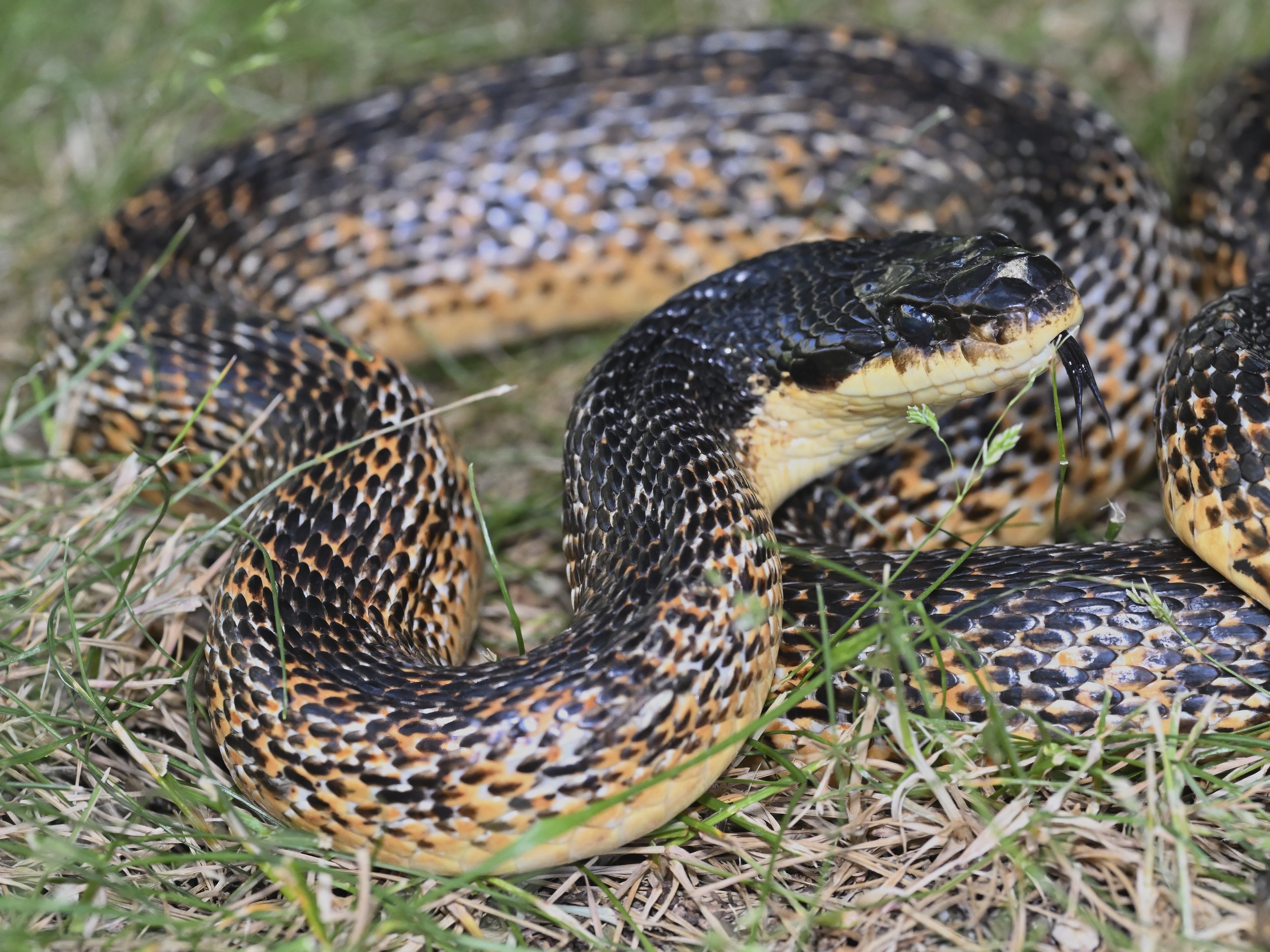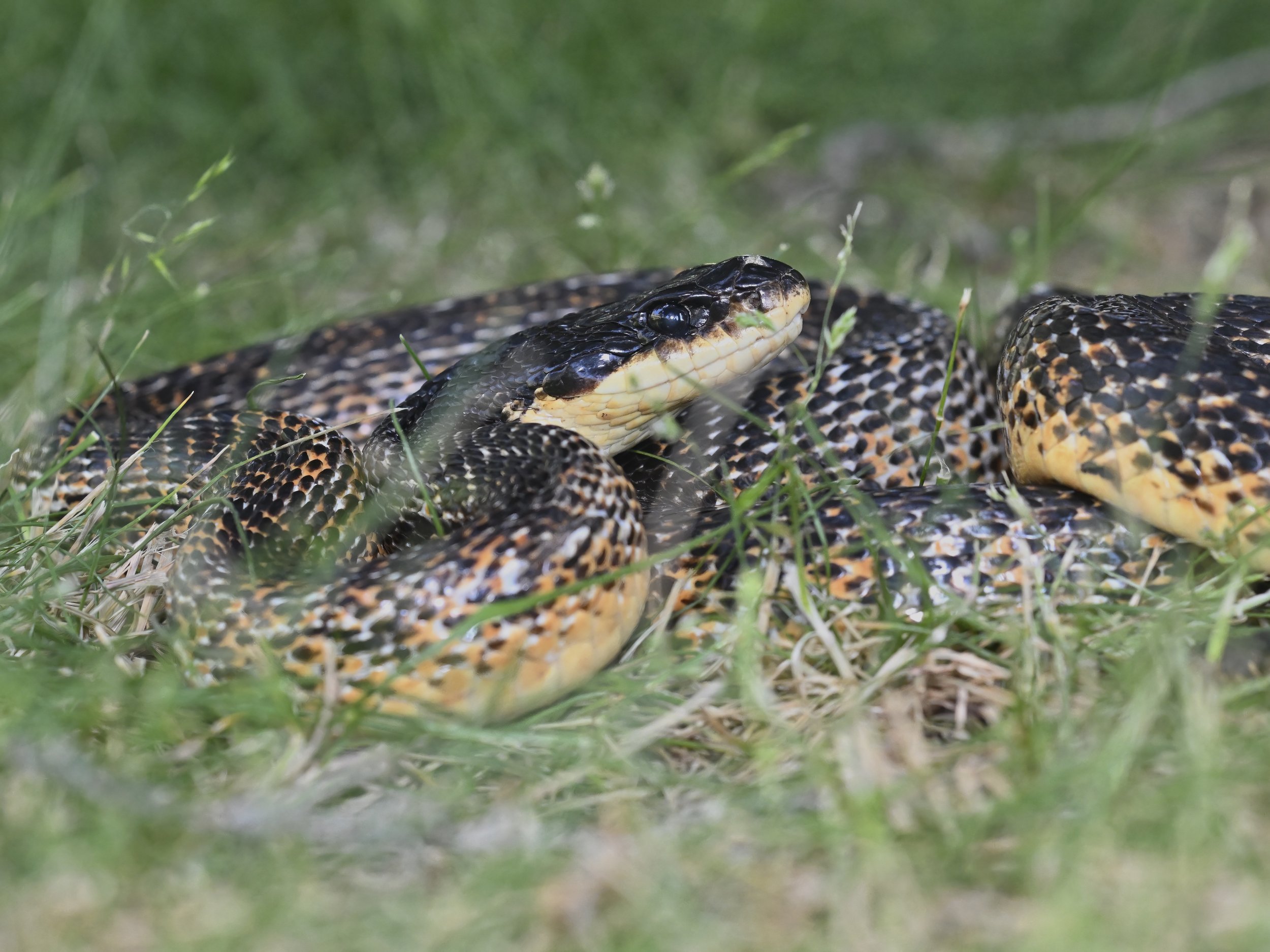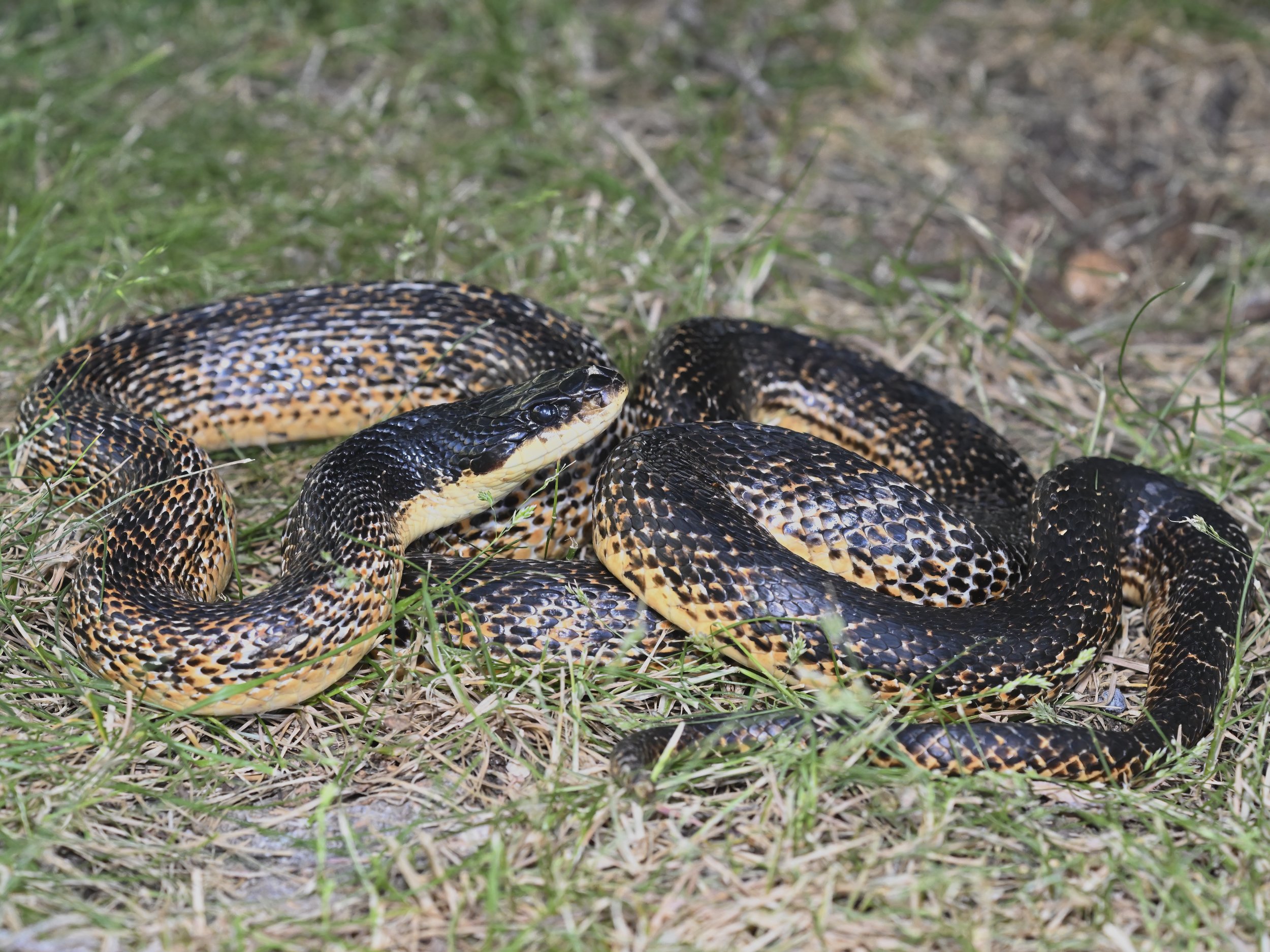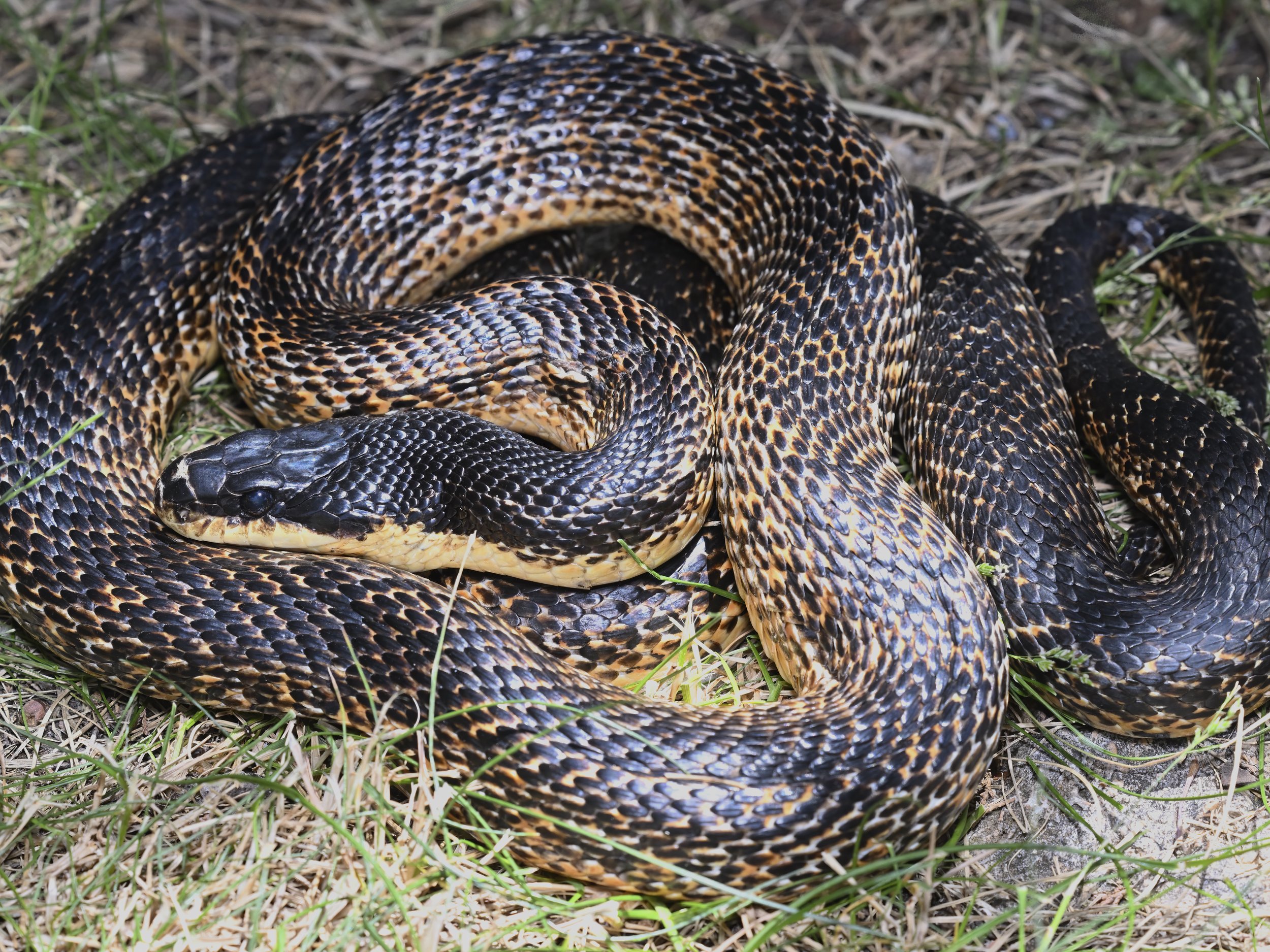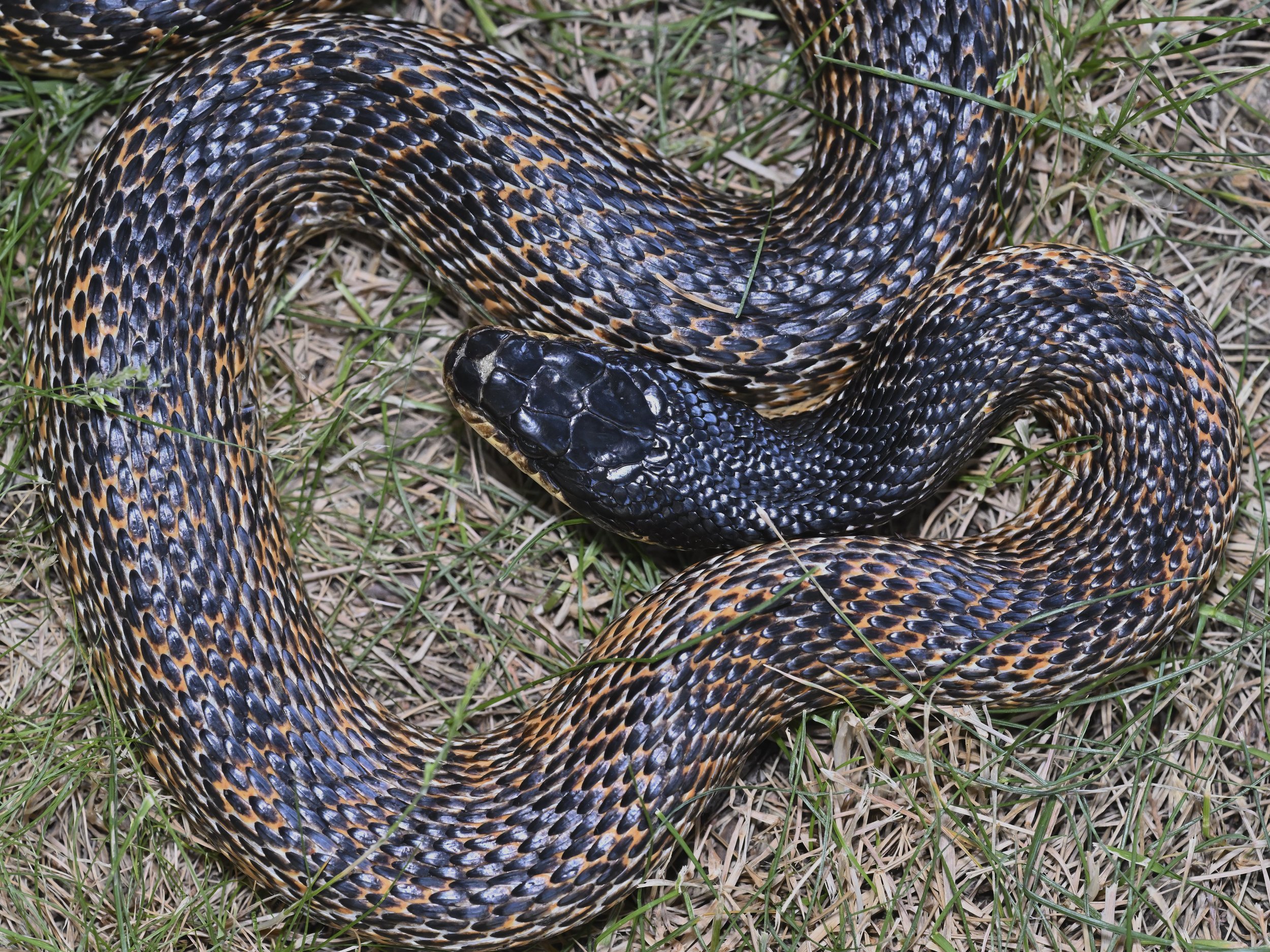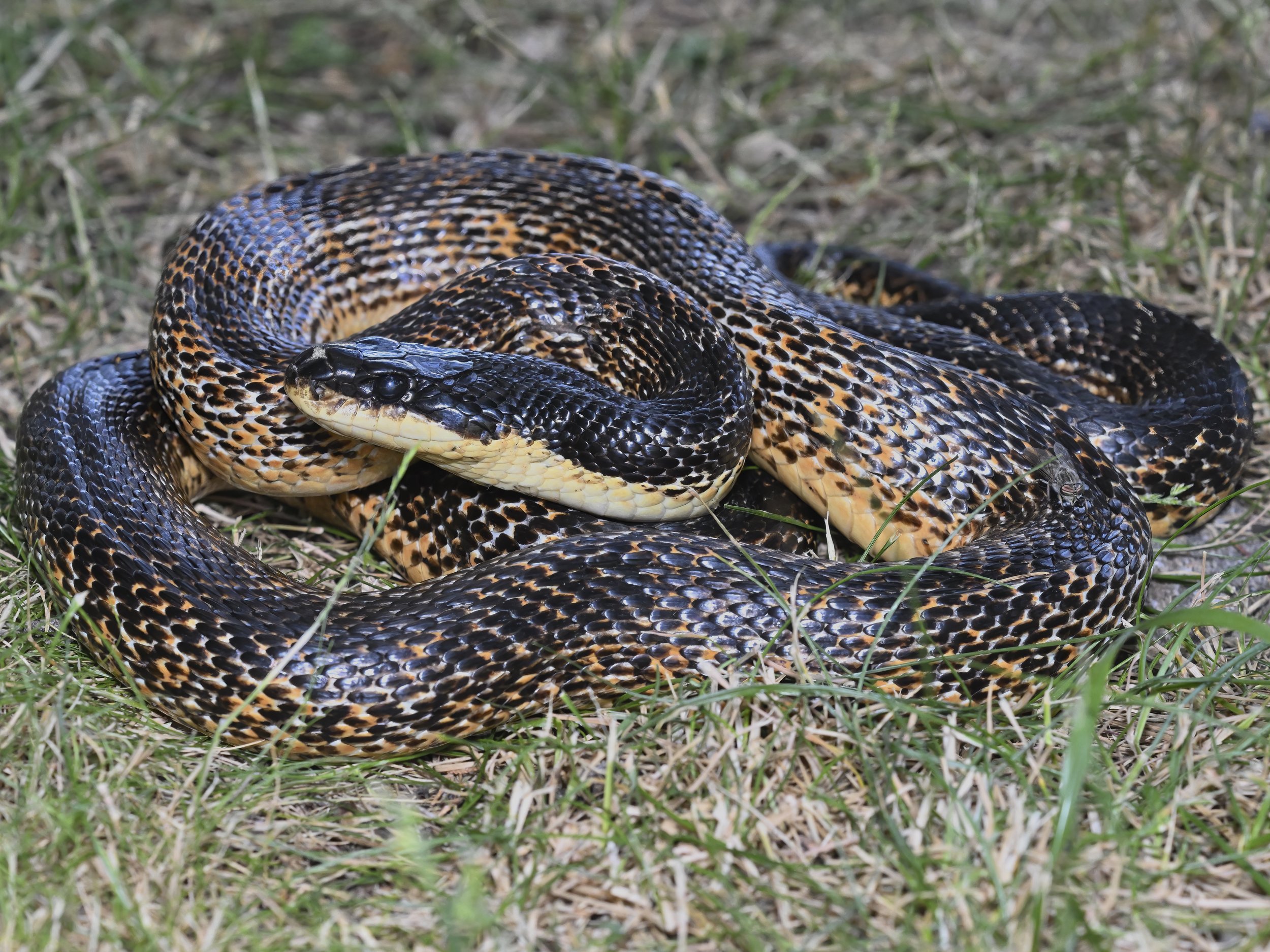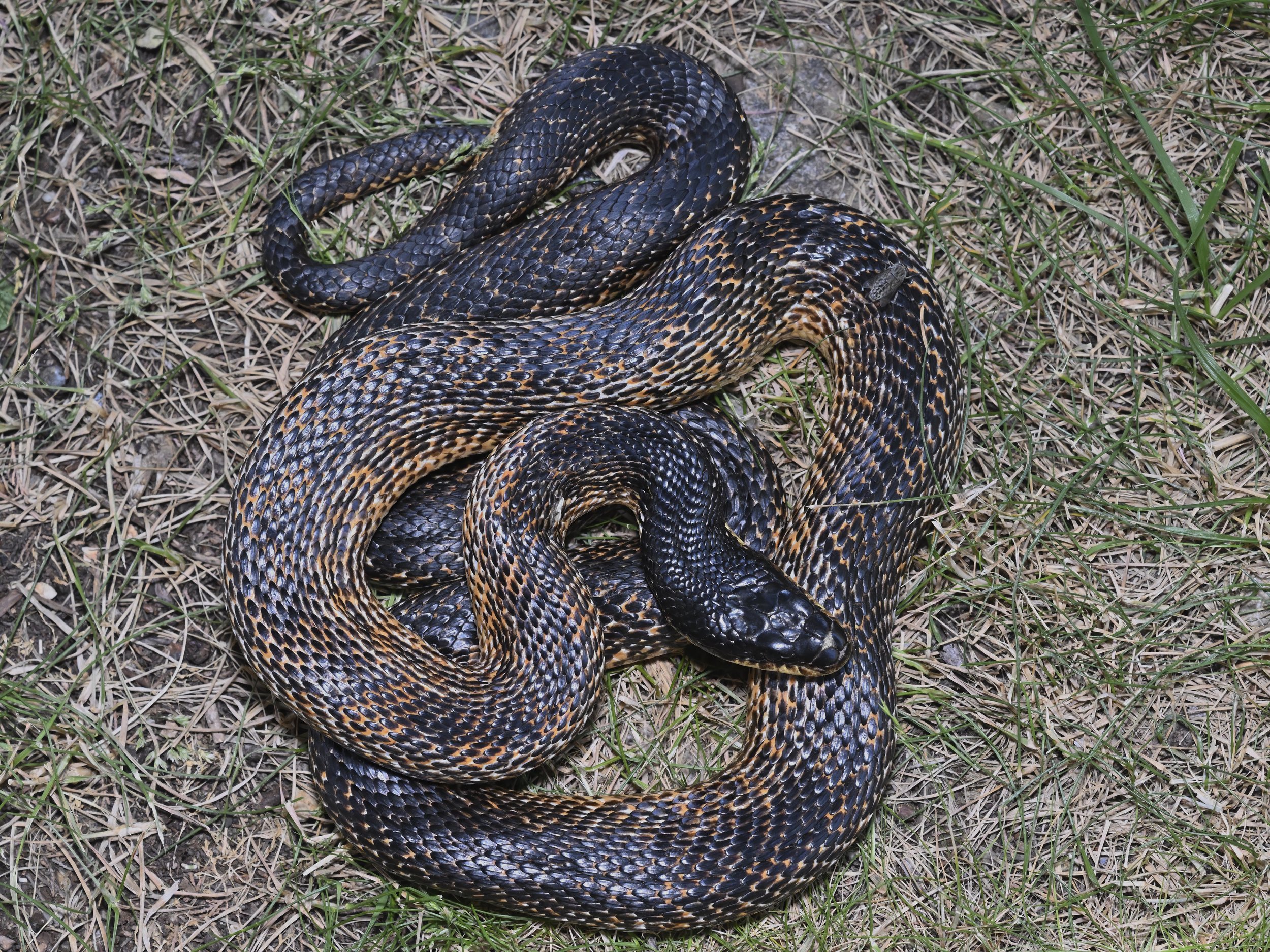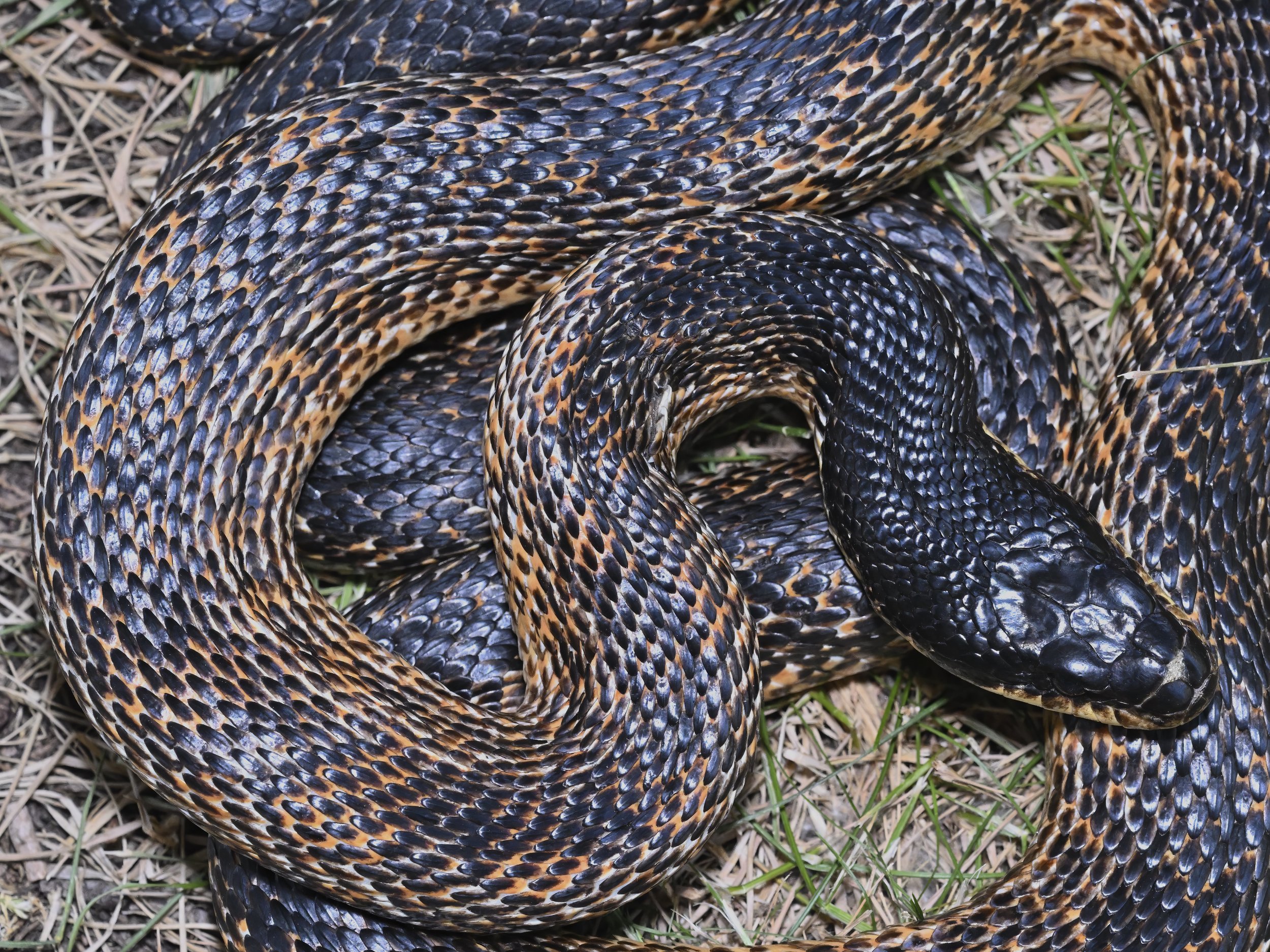Levant Rat Snake (Elaphe druzei)
non-venomous
The habitat of the Levant Rat Snake ranges between Lebanon, Syria and Palestine. This species thrives in diverse settings such as deciduous forests, scrublands, rocky hillsides, and even agricultural areas. It favors habitats that offer ample hiding spots, like rock crevices, fallen logs, and dense vegetation. This snake is also known to inhabit areas near human settlements, including abandoned buildings and farmhouses, where it can find shelter and hunt for rodents.
The Levant Rat Snake (Elaphe druzei), is a non-venomous species notable for its distinct physical appearance. This large snake can grow up to 200 cm (approximately 6.5 feet) in length, with a robust body. Its coloration varies from yellowish-brown to grey, adorned with dark, blotchy patterns running along its back, which tend to become more pronounced with age. The belly is typically lighter, often yellow or white, with irregular dark spots. The scales of the Blotched Snake are smooth, giving it a sleek and shiny appearance, which aids in its agility and speed.
The Levant Rat Snake plays a crucial role in maintaining ecological balance within its habitat. As a predator, it helps control the population of small mammals, particularly rodents, which can be agricultural pests. By regulating rodent numbers, the Levant Rat Snake contributes to the protection of crops and the prevention of disease transmission. Additionally, this snake serves as prey for larger predators, thus forming an integral part of the food web. Its presence indicates a healthy ecosystem, as it requires a habitat that supports a diverse range of species. Conservation of the Levant Rat Snake and its habitat is essential not only for its survival but also for the overall health of the ecosystems it inhabits.



